Every now and then we at Furious Cinema turn to one of our favorite classic genres, the western. We’ve previously posted a list of 50 Furious Westerns, and to build on that, we’re launching a series of in-depth looks at some classics of the genre. No rules. This is another guest post in the series by Simon Gelten (one of the most prolific writers on The Spaghetti Western Database), make sure you also read his previous articles.

1930 – Director: Raoul Walsh – Cast: John Wayne (Breck Coleman), Marguerite Churchill (Ruth Cameron), El Brendel (Gus, a comical Swede), Tyrone Power, Sr.(Flack), Ian Keith (Bill Thorpe), Charles Stevens (Lopez), John Big Tree (Indian Chief), Tully Marshall (Zeke), Ward Bond (Sid Bascom)
Until recently, it was one of Hollywood’s best kept secrets that John Ford had a role model. In his John Wayne biography, Gary Willes draws enough parallels between John Ford and Raoul Walsh to illustrate that the Godfather of American cinema was not as independent as one might think. Ford claimed to have worked as a cowboy before reaching Hollywood, but it was in fact Walsh who had worked as a cowhand in Mexico. Ford boasted that he knew several authentic heroes and bad guys from the Old West, but he had only spoken to Wyatt Earp in the man’s later Hollywood days, while Walsh had actually met Pancho Villa during the Mexican Revolution. Ford adopted Walsh’s eye patch and turned it into his trademark, but unlike Walsh he had never lost an eye. And most of all, Ford used to say that he had discovered John Wayne, but it was Raoul Walsh who gave him his first great starring role in the epic migration drama western The Big Trail.

The Big Trail was a production of elephantine proportions. Films like The Covered Wagon (1923), The Iron Horse (1924) andTumbleweeds (1925) had created the subgenre of the immigrant western, and The Big Trail tried to outdo them in sheer magnitude. Contrary to its predecessors, it was also a ‘talkie’. Various language versions were edited for various markets, with original scenes replaced by scenes with local actors. It was also decided to shoot different versions for the home market, a traditional 35 mm version plus a special 70 mm widescreen version, shot in a revolutionary process called Fox Grandeur. The Big Trail was, in other words, a mega production and the chance of a lifetime for a young actor like 23-year old Marion Morrison. It was also the production that turned Marion Morrison into John Wayne.
Morrison had already dropped the name ‘Marion’ in favor of ‘Duke’. He had been called Duke since he was a boy because he had a dog of that name. But producer Winfield Sheenan didn’t like ‘Duke Morrison’. Walsh then proposed Anthony Wayne, the name of a notorious general (‘Mad Anthony Wayne’) from the Revolutionary War. Anthony being too long, and Tony too effeminate, it was finally decided to go for ‘John’.
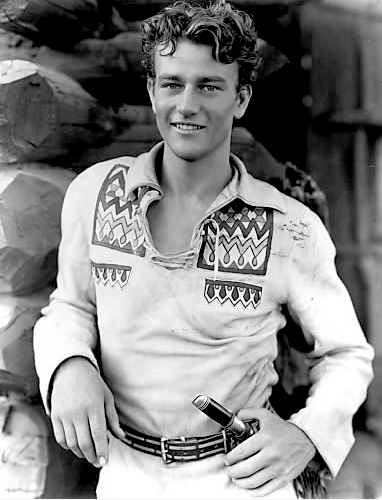
Wayne plays Breck Coleman, a young trapper who’s asked to lead a group of immigrants to the promised land across the mountains. He first refuses, but then changes his mind for two reasons: he has discovered that the crooks who have killed his friend, might have joined the group, and he has kissed – purely by accident – the travelling beauty Ruth on the lips. A kiss with consequences, so to speak. The revenge story and the romance are set against the background of the wagon train rolling westwards. Coleman suspects two men, Flack and Lopez, and it takes him the entire movie to gather the conclusive evidence. Ruth is of course courted by a second person, a sly-boots called Thorpe, who claims to be a wealthy landowner but is in reality a professional gambler.
The romantic subplot suffers a little from a series of silly misunderstandings, such as Ruth thinking that Coleman wants to sell her to the Indians as a squaw. But those scenes are born out of the necessity to bridge the lengthy time between this accidental kiss and the scene in which the two finally fall in each other’s arms. They can easily be forgiven. More troublesome are the attempts at comedy with a Scandinavian family; the accents aren’t funny at all and the slapstick would be more appropriate in a Laurel & Hardy vehicle. Both the revenge story and the action scenes work very well. The scene in which Coleman finally tracks down the two murderers in a blizzard is a particular highlight and the large-scale action scenes are often (literally) breathtaking. A scene in which the oxen and the wagons cross a river looks so real, that it’s hard to believe that nobody (or no animal) was hurt or even killed while filming it. The absolute highlight is a scene in which the wagons, horses and oxen must be lowered down a steep cliff, a truly mesmerizing image, reflecting Raoul Walsh’s ideas of the might of nature, a recurrent theme within his body of work. The end, with Wayne and Churchil among the towering sequoia trees, will no doubt remember those familiar with his work of the finale of Colorado Territory (1949), which has two tragic lovers (Joel McCrea and Virginia Mayo) brought back to ant-size in a stupendous Rocky Mountains landscape.

The Big trail was Big John’s chance of … no not of a lifetime, of a decade. The film failed at the box-office and its star got stuck for ten more years in B-movies until he was picked up by John Ford for Stagecoach (1939). 1929 was the year of the Crash and theaters didn’t want to invest in the equipment necessary for the 70 mm version, which was only shown in two theaters (one in New York, one in Los Angeles). Conditions on the set had been so hard and the atmosphere so unpleasant (it’s often said that Walsh had nearly beaten one of his actors to death during a conflict, presumably Power Sr) that many felt the film was born under a bad spell. Wayne’s behavior on the promotional tour didn’t help either. He didn’t like the promotional work, and lost his temper on a few occasions when he or the movie was criticized.
It took less than a decade before John Wayne was rehabilitated, but far more time for the movie to find its audience. Not until the 1990s, when the 70mm print was restored, it could be admired in its widescreen beauty. Its reputation has grown ever since. However, it’s not without flaws. The sound film was a new medium and screenwriters had yet to adapt themselves to it; some of the lines John Wayne was given, are awful, and he was also asked to deliver a few speeches, which wasn’t exactly his forte. Duke was no Shakespeare actor, more a man of the laconic remark, preferably of the malicious kind. One of his best lines in the movie (spoken prior to the crossing of the river) is: “What does he know about water, he never washed himself in his entire life!” – immediately the man and the voice that would become a legend are there. What Walsh attracted in Wayne, were exactly these qualities, his laconic manner of speaking and his ability to move naturally in front of a camera. In 1930 most actors were still acting in a rather theatrical way, and Walsh asked Wayne not to act, just to be. If he’s not speechifying or struggling with bad lines, he’s great in The Big Trail, that is: he’s simply there.
The Two Versions
The 35mm and the 70mm were partly shot simultaneously by different cameras, the only difference (apart from the different format) being the angle. Other scenes were first shot by one camera, then retaken by the other, leading to bigger differences. Both versions were edited separately. The 35mm version runs 108 minutes, the 70mm version 122 minutes. Several scenes in the 70mm print do not appear in the 35mm film, but there are also a few minor scenes in the 35mm print not found in the 70mm. The 35mm could focus on much shorter distances, so sequences shot in panoramic style in the widescreen version, might contain close-up shots in the 35mm print. Most 2DVD releases offer special features in which both versions are compared to each other.
Buy BluRay: From Amazon.com | From Amazon.ca | From Amazon.co.uk | From Amazon.de

Reference Works:
Gary Willis, John Wayne’s America, The Politics of Celebrity, New York, 1997
Ivan Scheldeman, De Films van John Wayne, Borgerhout 1979
Edward Buscombe, 100 Westerns, London 2006
Allen Eyles, Lonesome Trail, in: They Went That-a-Way, edited by Ann Lloyd & David Robinson, London, 1982
Video Document:
Raoul Walsh raconte The Big Trail (English, French subtitles):


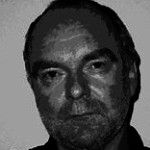
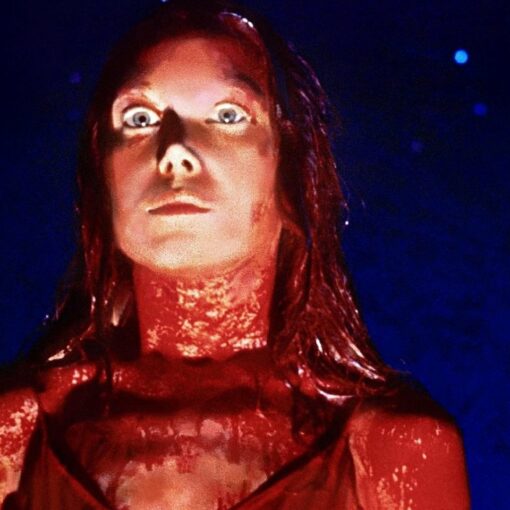
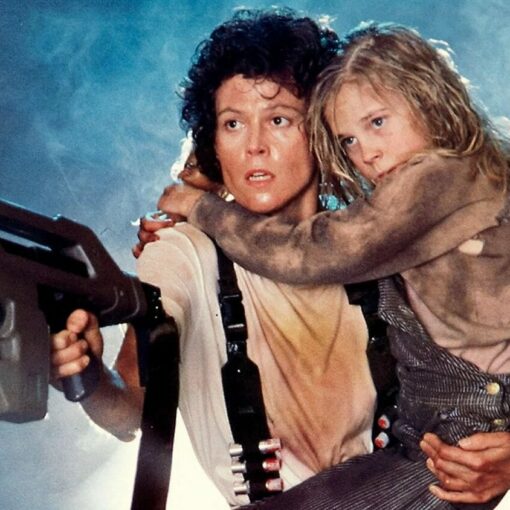
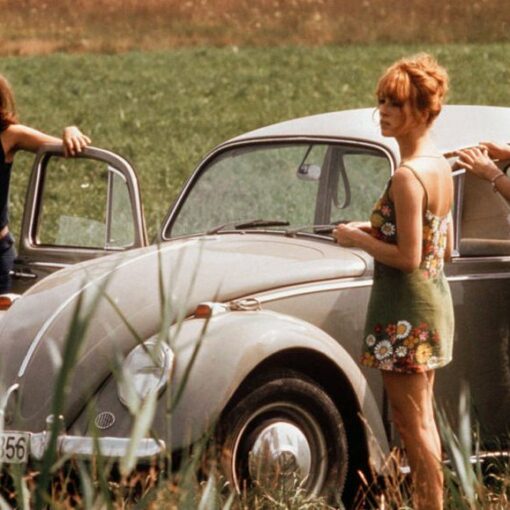

One thought on “The Big Trail | 50 Furious Westerns”
superb review Simon! I wish I could comment more on this film but I haven’t seen it yet.